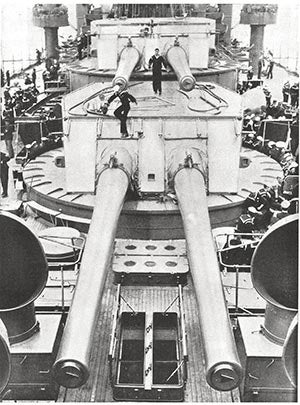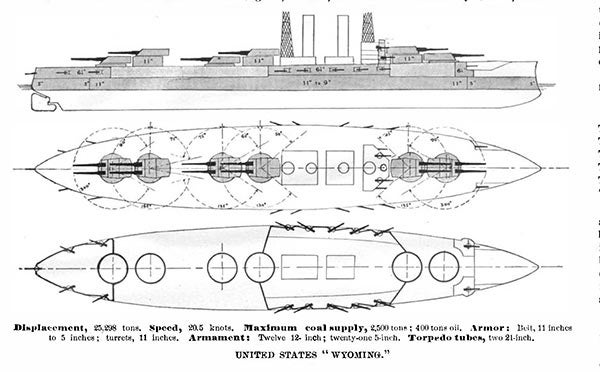This article was published in Scientific American’s former blog network and reflects the views of the author, not necessarily those of Scientific American
Reported in Scientific American, this Week in World War I: October 23, 1915
The U.S.S. Wyoming and sister ship U.S.S. Arkansas were America’s fourth entry in the international race to build dreadnought-class battleships. Wyoming was authorized in 1909, laid down in 1910, launched in 1911 and commissioned in 1912. But so rapid was the pace of battleship evolution that the Wyoming may well have been obsolete by the time it sailed on its maiden voyage.
The Wyoming’s main battery of 12 12-inch guns: impressive and large caliber, but not in an age when ships that might have been opponents were armed with fewer guns but much more powerful and longer-range: 13.5-inch or 15-inch guns.
On supporting science journalism
If you're enjoying this article, consider supporting our award-winning journalism by subscribing. By purchasing a subscription you are helping to ensure the future of impactful stories about the discoveries and ideas shaping our world today.
The Wyoming’s turrets were all on the center line of the ship, in keeping with the most efficient turret layout, but the center two turrets could only fire broadside, so were useless for firing ahead or astern.

Sailors clamber over the U.S.S. Wyoming’s two front turrets: each mounting two impressive but slightly underpowered 12-inch main guns, in 1915.
Scientific American, May 22, 1915
Secondary armament was arranged in a very old-fashioned way: guns below decks, well-secured behind armored casements. But they couldn't fire upward: smaller quick-firing guns were needed for use against aircraft; they were much more useful on top of the deck.
At 26,000 tons the ship was large enough to be counted a major warship, but the German Bayern-class of ships laid down in 1913 weighed in at 32,000 tons.
The vast clouds of smoke pouring from her funnel are from the oil-soaked coal used to fire the boilers—in an age when navies were converting over to oil, which was a much more efficient fuel from an engineering standpoint.
The propulsion system, at least, was followed the modern trend: steam turbines (even though the U.S. Navy went back to reciprocating engines on its next class of battleship).

Turrets, secondary armament and armor arrangement of the U.S.S. Wyoming, printed almost a year after the keel was laid down in 1910.
Scientific American, August 27, 1910
The Wyoming served in World War 1 dutifully patrolling. In 1931 the ship was converted into a gunnery training ship: all of those gun mounts were very useful in providing platforms to train naval gunners on different turret and gun configurations.
-
Our full archive of the war, called Scientific American Chronicles: World War I, has many articles from 1914–1918 on naval forces in the First World War. It is available for purchase at www.scientificamerican.com/products/world-war-i/